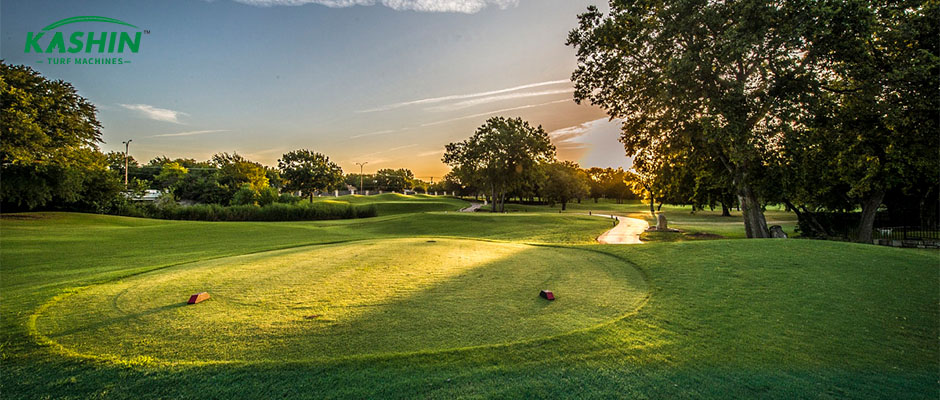The selection of grass species for sports fields should be based on different functions and different climate zones. The standards are:
It should have a developed root system and underground rhizomes to ensure the density of the lawn and the ability of the ground lawn to recover after damage; it should have strong tillering ability or developed ground runners to ensure a good density of the lawn; the leaves should be short, dense, and the grass structure should be compact; the leaves should have appropriate hardness and elasticity, so that the built lawn has good elasticity and wear resistance; the green period should be long, which can increase the use of the lawn sports field; it should have strong stress resistance, which can reduce the damage caused by adverse environmental factors; it should have strong adaptability, a large ecological range suitable for cultivation, and a wide range of use; it should choose disease-resistant varieties to reduce the occurrence of diseases and the difficulty of management; it should choose long-term, perennial grass species to increase the service life of the lawn; it should consider the source and price of seedlings, and try to choose high-quality and low-priced seeds to reduce costs.
Commonly used excellent grass species
Zoysia: It is a warm-season lawn grass in temperate and warm-temperate regions. It is distributed in large areas in Liaodong Peninsula, Shandong Peninsula and eastern coastal areas of my country. It is the most important warm-season lawn grass in my country. This grass basically meets the standards of sports field lawn grass, and can be used to build high-standard football fields. It is also often used for slope protection and street lawns.
Cynodon dactylon (Heavenly grass, Bermuda grass, etc.): It is a tropical and subtropical warm-season lawn grass, which is often used as a grass species for lawn sports fields in such areas. Among the Cynodon dactylon, there are varieties that use seeds to build lawn green spaces, and there are also varieties that use asexual reproduction, such as Heaven 419, Heaven 328, Heaven 57 and dwarf ornamental Cynodon dactylon and other excellent varieties, which are often used in football field lawns, etc.
Eclipta: It is one of the important tropical and subtropical sports field lawn grass species, and is often used in football field lawns.
Tall fescue: It is a cool-season lawn grass species, often used in football field lawns or one of the important mixed grass species.
Kentucky bluegrass: There is a big difference in morphological characteristics, ecological adaptability, disease resistance and price between varieties. When using them as grass seeds for sports fields, they should be carefully selected and not blindly selected.
Festuca australis and Festuca scabra: densely clumped, slender and low, often used as mixed components of sports field lawns in temperate and cold temperate regions.

Perennial ryegrass: strong tillering ability, dark green and shiny leaves, often used as mixed grass seeds for football field lawns.
Commonly used mixed seeding combinations
The mixed seeding combinations between different varieties within the species mainly include: mixed seeding combinations of different varieties of tall fescue, which are often used in football field lawns; mixed seeding combinations of different varieties of meadow bluegrass, which are often used in football fields, hockey fields, softball fields, pitching fields, etc.; mixed seeding combinations of different varieties of ryegrass, which are often used to quickly build temporary sports venues.
Combinations of different varieties between genera: 60% tall fescue, 20% ryegrass, 20% meadow bluegrass, which are often used in football field lawns; 60% tall fescue, 40% ryegrass, suitable for football field lawns; 60% tall fescue, 40% meadow bluegrass, suitable for football field lawns.
Covering and mixing of lawn sports fields: Zoysia grass sports field lawns in the north and Bermuda grass and Pseudo-egg turf sports fields in the south are all built with warm-season lawn grasses. The green period of this type of grass is relatively short. In order to extend the service life of lawn sports fields, cool-season grasses are often covered on warm-season lawn sports fields. If the growth rate of these warm-season grasses is significantly reduced and ryegrass is sown on them before they enter the dead grass period, the site can maintain good density and color in early winter and spring and be used normally. The technical points are: master the appropriate period of cover sowing; take good promotion and control measures in spring, promote zoysia grass and control ryegrass when zoysia grass turns green.
Post time: Nov-04-2024
